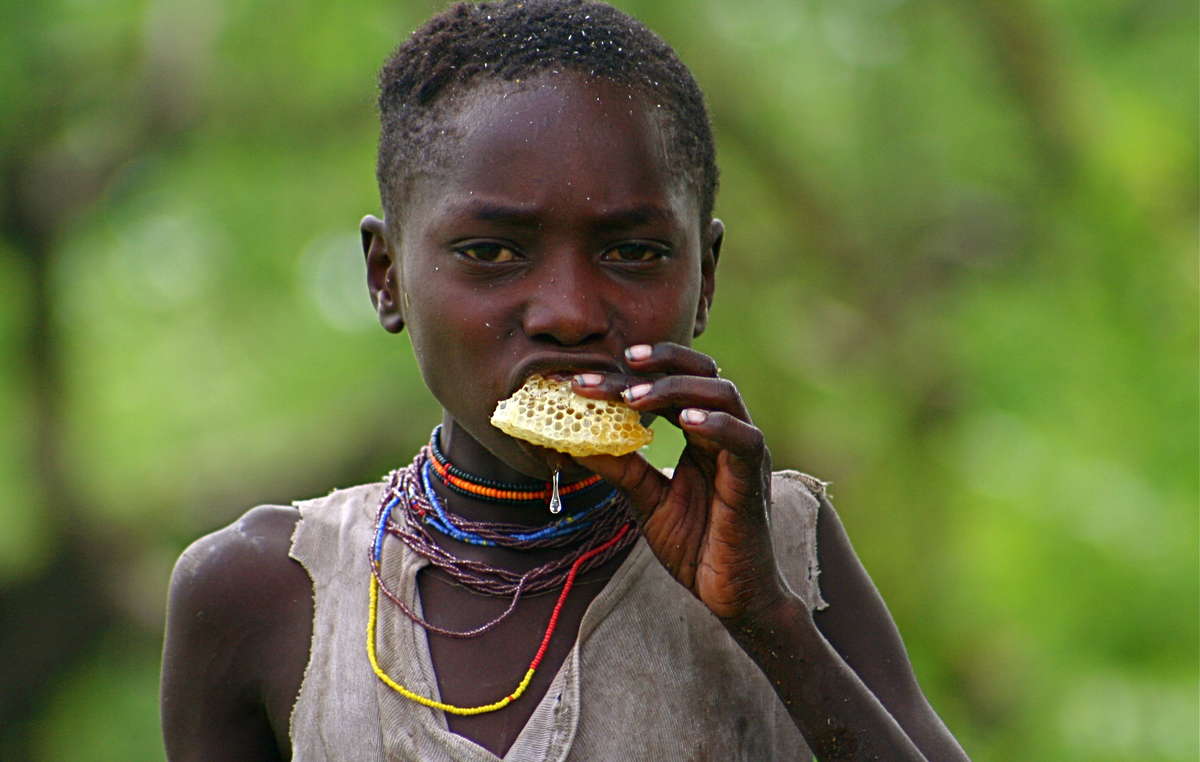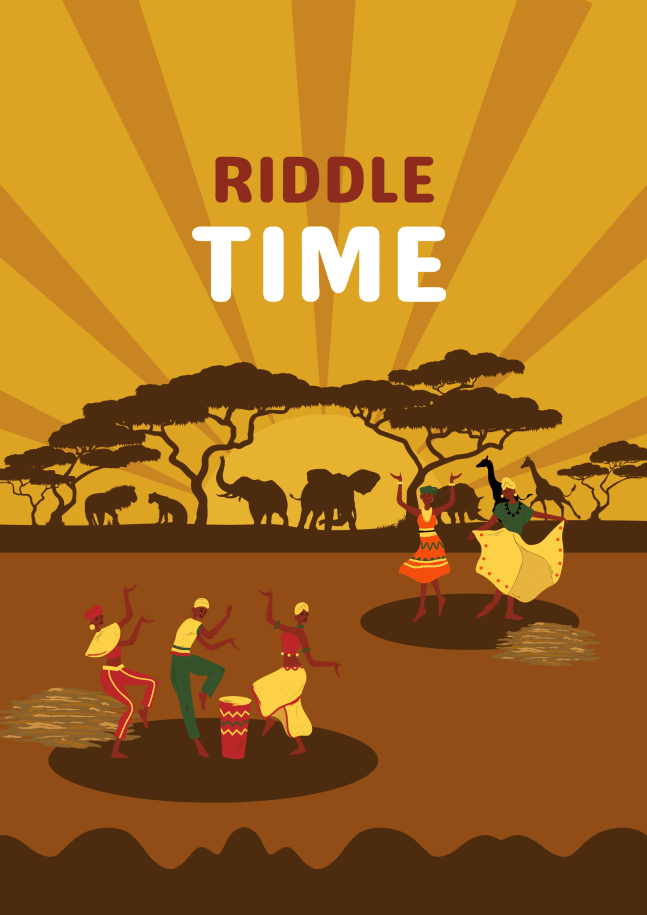The Hadza people are one of the last hunter-gatherer tribes in Africa who have stayed true to their tribal history. They live in north-central Tanzania, around Lake Eyasi in the central Rift Valley and the neighbouring Serengeti Plateau. The estimated population is about 2000 people.

A Hadza child is eating fresh honey directly from the comb.
Language of the Hadza
They speak the Hadzane language, which is traditionally classified as a Khoisan language because it contains clicks. However, it is unique and unrelated to any other, and they preserve through oral tradition.
Political and Social Organization
The basis of their social structure is equality, while political hierarchy doesn't exist, and almost all decisions are made by reaching an agreement through discussion.
They live in camps of typically 20–30 people, though those of over a hundred may form during berry season. They move camp for various reasons. One is through conflict resolution, which is done primarily by leaving camp. The Hadza people can also leave a camp when someone falls ill and dies, as an illness is associated with the place.
There is also seasonal migration when they look for better hunting grounds and areas with large numbers of tubers or berry trees when they are in season. If a man kills a large animal, such as a giraffe, far from home, a camp will temporarily relocate to the kill site (smaller animals are taken back to the camp). Shelters can be built in a few hours, and most of the possessions owned by an individual can be carried on their backs.
Economic Activity
The Hadza people are hunters and gatherers, with the men hunting and the women and children gathering berries, baobab fruit, and edible tubers. Using bows and arrows, with the tips dipped in poison from the Adenium shrub, the men camouflage with the environment to lure the wild game. The hunting is usually done early in the morning or late evening when the wild animals visit the waterholes.
The men also collect wild honey, working through whistle calls with an African bird named the honeyguide. The bird guides the Hadza hunters to a beehive. The reason behind this cooperation is that the Hadzabe collect the honey, and the bird easily gets the wax once the honey has been removed.
While women gather food in groups, the men do it individually. The men join the women in foraging for food when not hunting or collecting honey. During the rainy season, their diet is majorly composed of berries, roots and honey. However, more game becomes available in the dry season, adding meat to their diet.
The religion of the Hadza People
They do not follow a formal religion. Instead, prayers are offered to Ishoko (the Sun) or Haine (the husband of Ishoko) during a hunt and hold rituals such as the monthly epeme dance for men at the new moon and the less frequent maitoko circumcision and coming-of-age ceremony for women.
Challenges
The Hadza are, however, facing the challenge of losing their culture due to the invasion of their land by the neighbouring communities seeking land for agriculture and pasture for their cattle. The development of national parks and reserves within their habitats also threatens their survival as it is illegal to hunt within the parks.
Did you enjoy the story? Don't forget to leave a like.
Additional Resources
Marlowe, F. W. (2010) The Hadza Hunter-Gatherers of Tanzania. Berkeley: University of California Press.
Power, Camilla. (2015). Hadza gender rituals – epeme and maitoko – are considered counterparts. Hunter Gatherer Research. 1. 333. 10.3828/hgr.2015.18.
[Updated for auto-tagging test]Join the Lughayangu Community!

